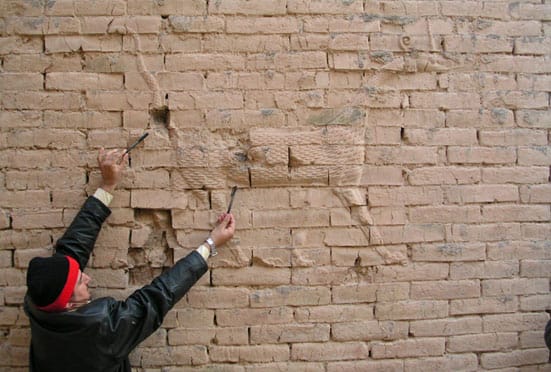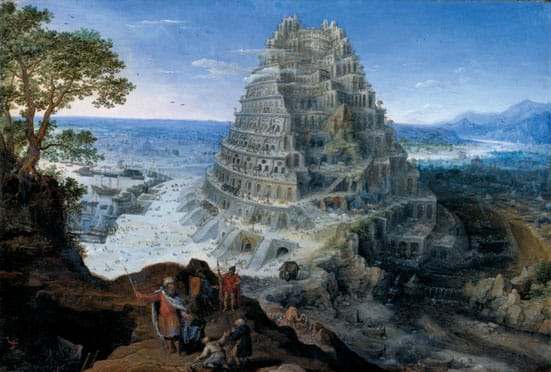13th November 2008 — 15th March 2009
The British Museum’s Babylon: Myth and Reality attempts to address both archeological remains of a historical city and the same city’s mythic legacy within religious texts and the arts. On the first wall of the exhibition, text overlaid on a reproduction of Breugel’s Tower of Babel states: ‘Breugel’s interest did not include, nor require archeological evidence’; this schism between an actual ancient civilization and its image is ostensibly at the centre of the show.
Until the 1900’s the actual site of Ancient Babylon had not been properly excavated, most of what was known of Babylon up until that point being derived the Old Testament and Greek writers. The name had become malleable (in Christian texts, for example, it was often interchangeable with that of Rome) and remains so. The power of the image of Babylon; of a civilization that existed in reality, but about which so little is known; is in this malleability, enabling such potent allegorical and ideological use.
Although the bulk of the artworks referred to here come from eighteenth and nineteenth century Europe, the ongoing use of ‘Babylon’ in culture is also acknowledged, from its place in Rastafarian culture (where the name is used when referring to the USA), to Kenneth Anger’s book title, Hollywood Babylon. The exhibition even includes what looks like a screen-grab of an Allmusic.com search of the word ‘Babylon’, producing results across all genres of popular music.
As well as the continued use of Babylon as image, the show describes (in a tantalizingly brief section) the recent political re-activation of the archeological site in present day Iraq by Saddam Hussein. According to British archeologists, great damage has been done to it by Saddam’s attempted reconstruction of the city, including bricks stamped with his own name. Even in the 21st century, ancient Babylon is brought into play as a political tool, although in this case as proof of a grand monarchical lineage, rather than evidence of a terrifying divine retribution.
Compared to the British Museum’s permanent collections, where objects are displayed in a way that emphasizes their sculptural or monumental properties, this exhibition is a little like walking through a giant book – the walls are given a uniform colour scheme, reproductions of paintings are displayed in large prints, etchings and actual paintings are neatly arranged on walls so as to show the progression of an image rather than discrete ‘artworks’.
The first room includes several ceramic tile reliefs of lions and one of a strange looking dragon but also photographs of how they are usually seen in Berlin’s Vorderasiatisches Museum. I would suggest that the ‘reality’ of a Babylon outside religion and art most strongly evoked here is (inevitably) the reality of Babylon as it now exists in European museums. What is of real fascination here is the history of an image; through its myriad and continuing adaptations, mutations and hijackings, an ongoing process that the curators of this exhibition are as much a part of as anyone else.
Richard Whitby
British Museum
Great Russell Street
London WC1B 3DG
http://www.britishmuseum.org/
Open
Daily 10.00-17.30 (last entry 16.20)
Open late on Thursdays and Fridays until 20.30 (last entry 19.20)

Damage to dragon reliefs at Babylon, 2004. © John Curtis - Trustees of the British Museum

The Tower of Babel, 1595, Oil on panel. Artist- Lucas van Valckenborch (Inv. No. MRM M31) © Mittelrhein-Museum Koblenz